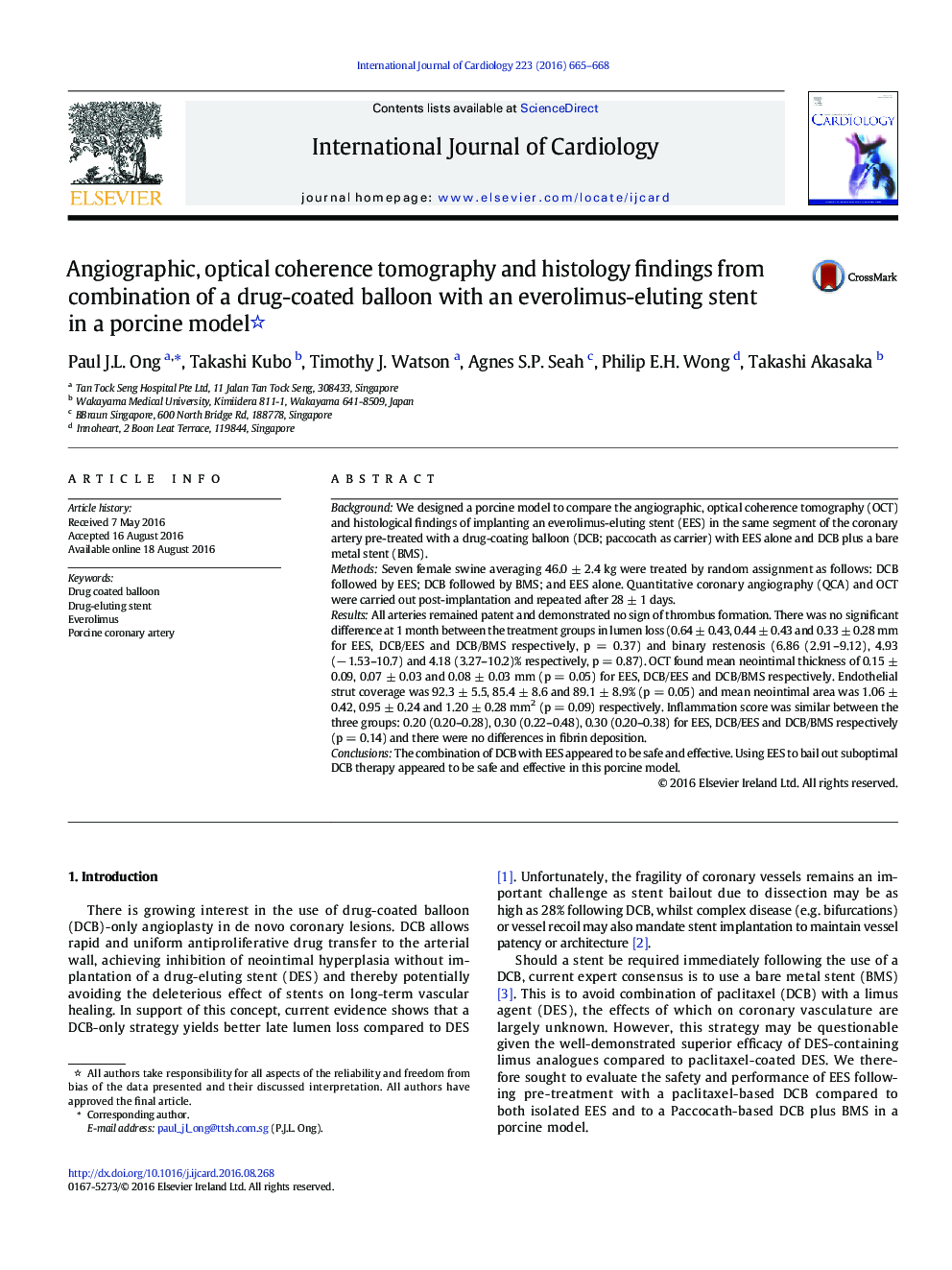| Article ID | Journal | Published Year | Pages | File Type |
|---|---|---|---|---|
| 5963228 | International Journal of Cardiology | 2016 | 4 Pages |
BackgroundWe designed a porcine model to compare the angiographic, optical coherence tomography (OCT) and histological findings of implanting an everolimus-eluting stent (EES) in the same segment of the coronary artery pre-treated with a drug-coating balloon (DCB; paccocath as carrier) with EES alone and DCB plus a bare metal stent (BMS).MethodsSeven female swine averaging 46.0 ± 2.4 kg were treated by random assignment as follows: DCB followed by EES; DCB followed by BMS; and EES alone. Quantitative coronary angiography (QCA) and OCT were carried out post-implantation and repeated after 28 ± 1 days.ResultsAll arteries remained patent and demonstrated no sign of thrombus formation. There was no significant difference at 1 month between the treatment groups in lumen loss (0.64 ± 0.43, 0.44 ± 0.43 and 0.33 ± 0.28 mm for EES, DCB/EES and DCB/BMS respectively, p = 0.37) and binary restenosis (6.86 (2.91-9.12), 4.93 (â 1.53-10.7) and 4.18 (3.27-10.2)% respectively, p = 0.87). OCT found mean neointimal thickness of 0.15 ± 0.09, 0.07 ± 0.03 and 0.08 ± 0.03 mm (p = 0.05) for EES, DCB/EES and DCB/BMS respectively. Endothelial strut coverage was 92.3 ± 5.5, 85.4 ± 8.6 and 89.1 ± 8.9% (p = 0.05) and mean neointimal area was 1.06 ± 0.42, 0.95 ± 0.24 and 1.20 ± 0.28 mm2 (p = 0.09) respectively. Inflammation score was similar between the three groups: 0.20 (0.20-0.28), 0.30 (0.22-0.48), 0.30 (0.20-0.38) for EES, DCB/EES and DCB/BMS respectively (p = 0.14) and there were no differences in fibrin deposition.ConclusionsThe combination of DCB with EES appeared to be safe and effective. Using EES to bail out suboptimal DCB therapy appeared to be safe and effective in this porcine model.
